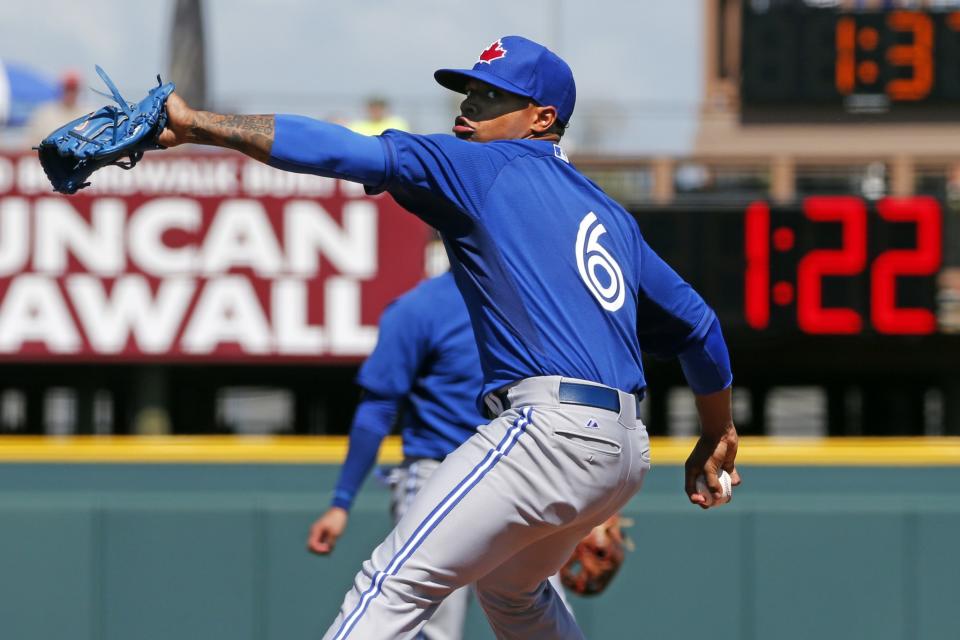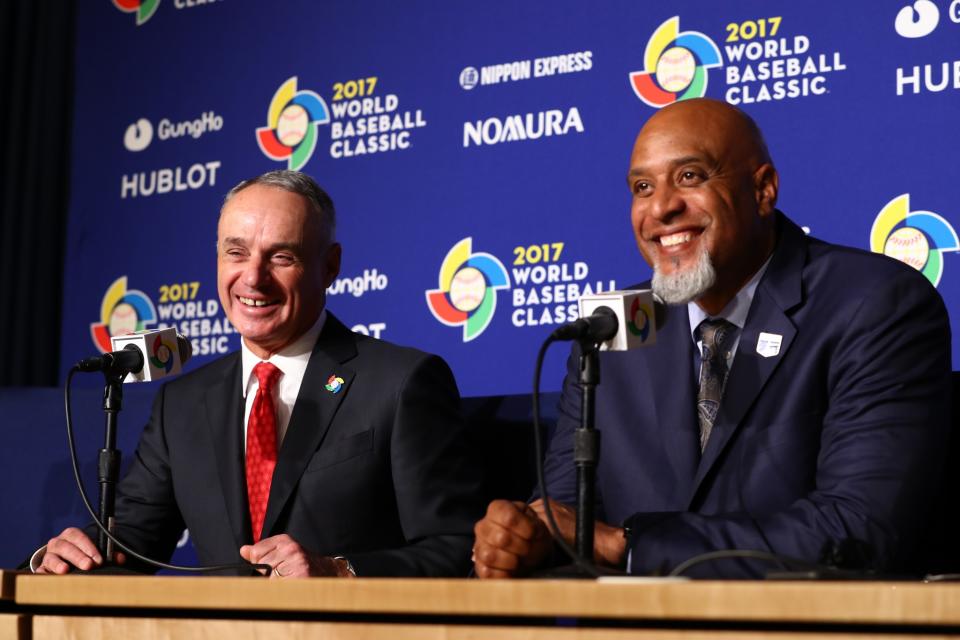There's one obvious solution to MLB's pace-of-play debate

There’s a war at the highest levels of Major League Baseball, and the sport doesn’t know what to do about it. All that’s at stake is the way the game is played.
What makes it so complicated is there aren’t clear sides. Trying to address pace of play can challenge even the staunchest baseball ideologue. Consider the phraseology itself. Does baseball have a pace-of-play problem? Or is it a pace-of-play issue? Or rather a pace-of-play question? The continuum isn’t blurry. It’s 20/1,000.
Regardless of the noun assigned to it, pace of play stood at the forefront of baseball’s near-term evolution before the season and finds itself squarely there still after the first 11 days of the season backslid into the slog MLB dreads. At 3 hours, 5 minutes for an average nine-inning game, baseball in 2017 is 15 minutes a game longer than it was just seven years ago and three minutes ahead of its record-slow pace during the 2014 season, which prompted this self-examination.
Increasingly apparent inside the offices at 245 Park Avenue is that pace of play, as a philosophical matter, pits two very disparate agendas against one another: the in-person viewing experience vs. how the game plays on television. Balancing the two is nothing new for professional sporting leagues. In baseball, it just happens to be at the core of its existential crisis.
Accordingly, MLB over the last year has commissioned a pace-of-play study to help it better understand how its product is viewed by fans. And it has only reinforced that finding a solution to satisfy both will be at the heart of whatever changes do arrive within the next year.
There is a growing consensus, a half-dozen league, front office and player sources told Yahoo Sports, that the most effective fix would be a 20-second pitch clock. With a pitch clock already in place in the minor leagues and both between-innings and manager-replay-decision clocks ticking away at the major leagues, enough Pandora’s boxes are open to force the issue.
Whether the players will accede to MLB’s request for the clock remains unlikely – nearly half of union members, after all, are pitchers – but a compelling argument in favor of the clock exists: It might be the one substantial change that can significantly increase a game’s pace, cut back on its time and not aggrieve at least one side of the actual debate.
It’s important to view all pace-of-play discussions through the in-person vs. TV prism. They are baseball’s two largest revenue generators and thus will drive how the league handles pace of play.
Over the last year, as MLB asked fans at stadiums around the country what they thought of their in-person experience, the response was almost universal: Taking in a ballgame is a great way to spend an afternoon or night, even when it stretches well beyond three hours. At the same time, the league dove deep into the trends of television viewers, and the conclusions – though expected – were nevertheless alarming: Watching baseball on TV is something different altogether, and it doesn’t do nearly as good a job of engaging the casual fan.
This makes sense. The ambiance of live baseball is undeniable. Unlike the NFL, whose fans often opt to watch games on TV rather than at the stadium, a large part of the baseball experience is tied to the marriage of nostalgic elements – the fresh-cut grass, the peanuts and Cracker Jack, the seventh-inning stretch – as well as the modern accouterments, from kids areas to copious dining options to between-innings entertainment.
During the MLB survey, in fact, fans said they actually enjoyed the languid pace at which a baseball game operates. Most attend games to spend time with friends or family, and the between-batter lulls or between-inning time offers an opportunity to chat.

Pace of play for fans watching at home is different. While both sides share common grievances – fans everywhere loathe late-inning bullpen churn that turns even a hare game into a tortoise – data showing that almost all fans who stop watching do so during commercial breaks is troublesome. It’s not surprising, exactly, but its also highlights MLB’s conundrum.
Limiting pitching changes, for example, is something the league has considered but almost assuredly never will act on because about a third of its annual revenue comes from TV deals. The national television package will pay MLB about $1.5 billion this season, and upward of $1.75 billion will come via local TV contracts.
Which leaves the pitch clock. Baseball could lessen mound visits, and that would help, and it can try to improve its TV product in other ways, which would be all well and good. A pitch clock doesn’t aggrieve the in-person or at-home viewer, though, and considering what has happened thus far in 2017, its presence is more needed than ever.
Teams are averaging about 38 plate appearances per game and 3.9 pitches per plate appearance, which means each team is seeing, on average, 147 pitches a game. That’s 294 total pitches. For some reason, the time between pitches has jumped 1.4 seconds from last year, to 24.1 seconds. Put in the 20-second clock, shave 4.1 seconds per pitch, multiply it by 294 and the result is staggering.
Theoretically, baseball would save 19 minutes per game with a pitch clock alone. In practice, the dip would be more like half that, but still, it’s not just about time of game. A pitch clock automatically engages fans, doesn’t allow them to dawdle on their phones without missing a pitch. There is a crispness, a tautness to games thrown by pitchers who abhor downtime and prefer to rock and fire.
A pitch clock is the solution, everyone rational in baseball knows it’s the solution and yet it will not come without blood. Despite a memorandum outlining their new collective-bargaining agreement, the league and the MLB Players Association still haven’t finished the actual Basic Agreement despite having come to terms nearly 4½ months ago. Translation: The days of players agreeing without seeking something in return are over, even if what they’re agreeing upon is in the sport’s best interest.
As commissioner Rob Manfred alluded to at a news conference in February, he can unilaterally impose new rules next season should the MLBPA stonewall him. If forced into that choice, it really will show what side of the continuum Manfred falls on. Is he a true believer in the dangers of slow pace of play and willing to enrage the union, or does his relationship with the players and its long-term implications matter more?
These are all fascinating questions at a fascinating point in the sport. It’s a different game, one full of strikeouts and walks and home runs and lacking the balls in play that are like an amphetamine to a game’s pace. The people at the stadium still love it. Those at home aren’t nearly as effusive. Baseball has two masters. Serving both won’t be easy.


